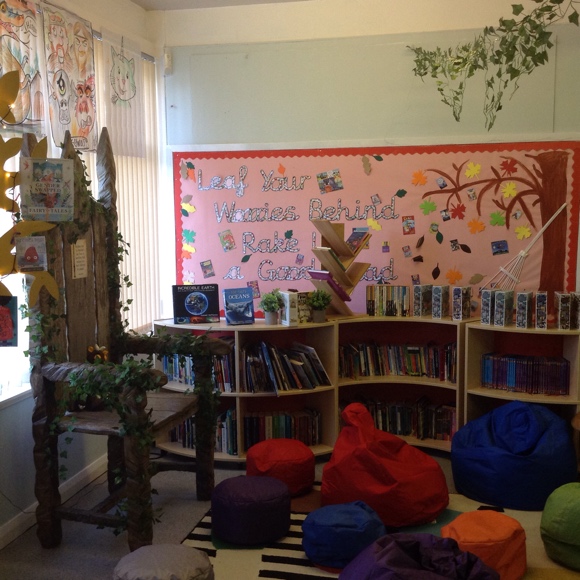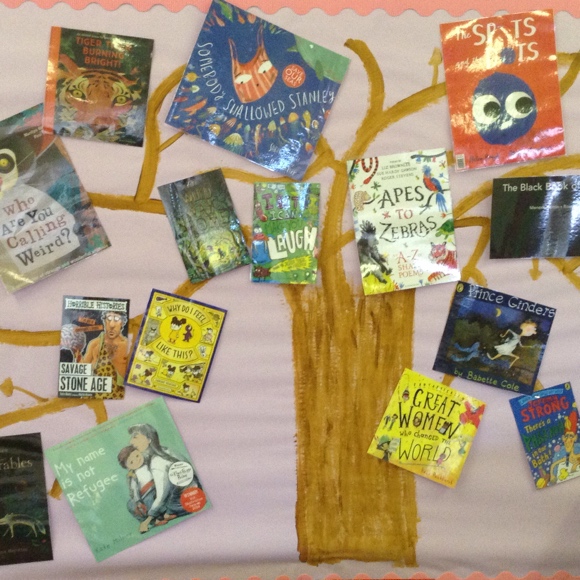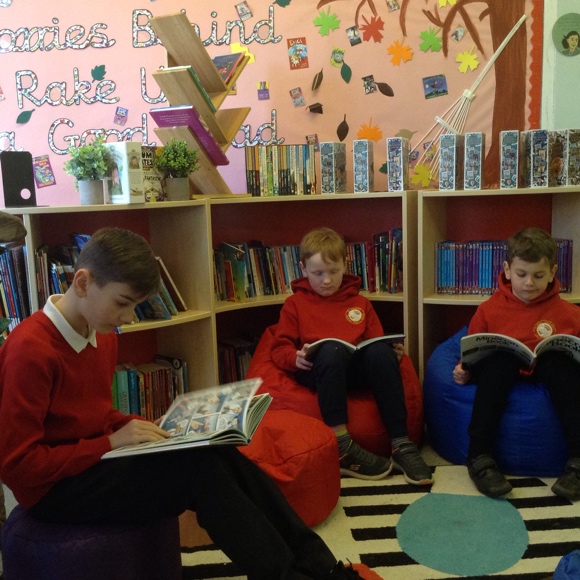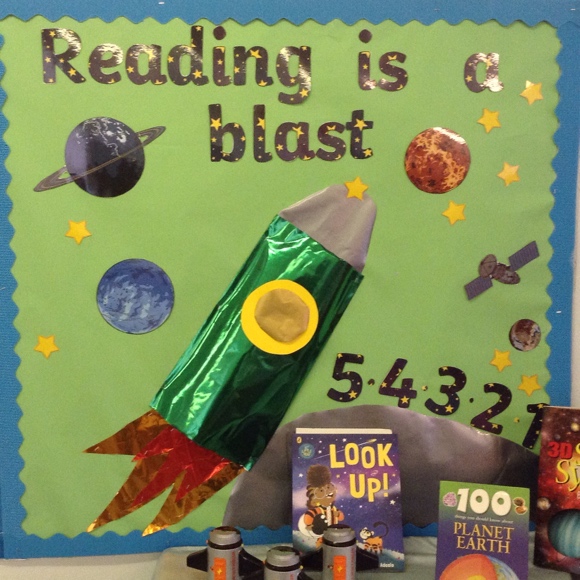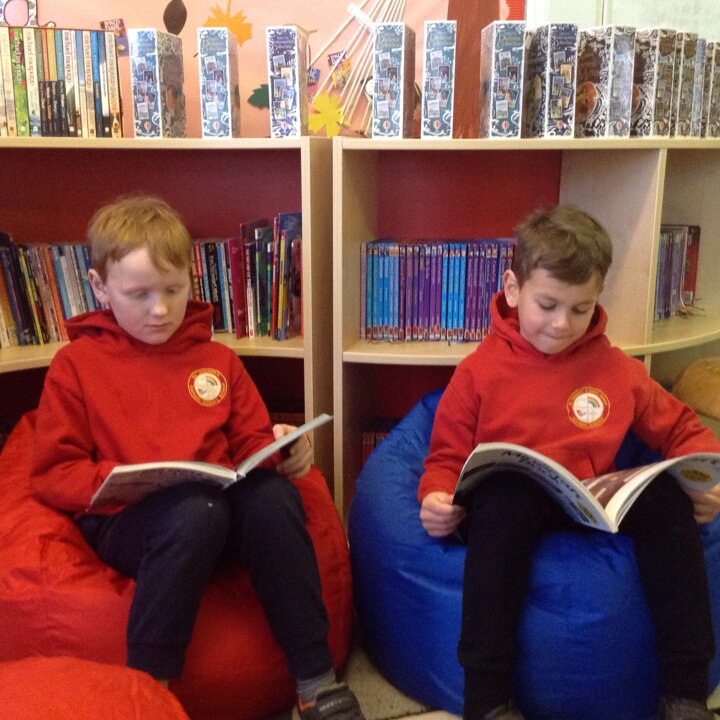“A child cannot understand what he cannot decode, but what he decodes is meaningless unless he can understand it.”
– Dr Louisa Moats
Subject Lead: Miss Ball

Reading Curriculum
Intent
At St Joseph’s, we have designed a broad and balanced curriculum. As our pupils’ progress, we intend for our children to develop a love of reading as they weave together the complexities of this skill but do so with the support of trained staff and their parents and carers with a sense of enjoyment and curiosity.
Our reading curriculum aims to ensure that children:
- become fluent confident readers, reading texts from many genres
- are challenged as they take the steps to gain deep skills in word recognition and language comprehension
- develop curiosity and creativity as they are tempted to find out more as their reading, fluency and prosody skills grow.
- develop a sense of community where children share their love of books and respect
- a supportive, honest and friendly environment where children are prepared to take risks and secure a deep understanding and self belief in their reading skills.
- can understand a variety of texts by applying their reading word and comprehension skills
- have a resilience and responsibility at whatever age to develop and mastered life long learning skills that can be applied to a 21st century Britain.
- stay motivated and committed believing they can do it!
Implementation
At St Joseph’s children start their reading journey via the Read Write Inc scheme. Phonics is taught daily in order to aid children develop the complex skills of reading, where they develop their sound knowledge, blending skills and fluency. The children are assessed regularly and are grouped accordingly. Additional support is given through interventions for the children in KS1 and those in KS2 who have not passed their phonic test. Reading books are matched to the sounds the children know, therefore the children can read them independently. Once children have finished Read, Write Inc they move onto Reading Planet, which is a transition scheme to move them from Read, Write Inc to Accelerated Reader. Phonics continues across the school daily as part of our English lesson. Children have several opportunities throughout the day to develop their reading skills through early morning and breakfast club reading, Accelerated Reading after lunch and Words and Us at the end of the day.
Our teaching and support staff have been trained in the phonics programme Read, Write, Inc. Our teaching of early reading, writing and spelling within the school is, therefore, based on the Read, Write Inc programme. This begins when children join in Nursery and Reception and continues until a child is a confident and competent with these early skills. At St Joseph’s we believe that a strong and consistent approach to the teaching of phonics is vital for our children to begin to access the rest of the curriculum.
Reading planet is a reading scheme that the children transition onto after they finish Read, Write Inc. It provides a structured scheme for them to follow before they move onto Accelerated Reader. It can also be used alongside Accelerated Reader for any children who struggle to read fluently and need a more structured approach.
Accelerated Reader is a computer programme that helps teachers to manage and monitor children’s independent reading practice. The children pick a book at their own level and read it at their own pace. When finished, the child takes a short quiz on the computer. The scheme generates a lot of data for the class teacher to monitor progress.
Impact
Our aim is that children become fluent readers by the end of KS1 so they can continue to build upon fluency and comprehension skills.
Attainment in phonics is measured by the Phonics Screening Test at the end of Y1 and Y2. Reading attainment is also measured throughout the year using the Star Reader test, which enables us to measure the pupil’s reading age against their chronological age. This enables us to follow the pupil’s progress towards their statutory assessments at Y6.
We ensure reading is a high priority across the school as we know it is the key to unlocking all the other curriculum areas for the pupils. Ultimately, we want all the children to develop a life long love of reading.
Developing reading skills through Read, Write Inc at St Joseph’s
At St Joseph’s we aim for all our children to become fluent, confident readers who are passionate about reading.

Children who read regularly or are read to regularly have the opportunity to open the doors to so many different worlds! More importantly, reading will give your child the tools to become independent life-long learners.
We can achieve this together through:
- Read Write Inc, a program to help to your child read at school
- Encouraging children to develop a love of books by reading to them daily, at home and at school
- Giving children access to a wide range of books at school and at home
At St Joseph’s we use Read Write Inc Phonics (RWInc) to give your child the best possible start with their literacy. We have put together a guide to how the RWInc programme works together with some useful links.
Miss Hopps is our Read Write Inc lead teacher, so if you have questions about RWInc, contact school who can refer you to her. Please take the time to read the information as it will provide invaluable information as to how you can help and support your child in reading.
What is Read Write Inc?
Read Write Inc (RWInc) is a phonics complete literacy programme which helps all children learn to read fluently and at speed so they can focus on developing their skills in comprehension, vocabulary and spelling. The programme is designed for children aged 4-7. However, at St Joseph’s we begin the programme in Nursery and will continue teaching RWInc to children beyond the age of 7 if they still need support in their reading.
RWInc was developed by Ruth Miskin and more information on this can be found at https://ruthmiskin.com/en/find-out-more/parents/.
How will RWInc be taught?
All children are assessed regularly by our RWInc lead teacher so they work with children at the same level. This allows complete participation in lessons.
Nursery
When appropriate, children will be introduced to the initial sounds in short five minutes sessions
Reception
In Reception all children will learn how to ‘read’ the sounds in words and how those sounds can be written down.
Reading
The children:
- learn 44 sounds and the corresponding letters/letter groups using simple picture prompts – see below
- learn to read words using Fred talk and sound blending
- read from a range of storybooks and non-fictions books matched to their phonic knowledge
- work well with partners
- develop comprehension skills in stories by answering ‘Find It’ and ‘Prove It’ discussion questions
Writing
The children:
- learn to write and form the letters/letter groups which represent the 44 sounds with the help of fun phrases
- learn to write words by using Fred Talk
- learn to build sentences by practising sentences out loud before they write
Talking
The children
They work in pairs so that they:
- answer every question
- practise every activity with their partner
- take turns in talking and reading to each other
- develop ambitious vocabulary
Year One & Year Two
Children follow the same format as Reception but will work on complex sounds and read books appropriate to their reading level. Daily sessions of RWInc phonics last for one hour. Once children become fluent speedy readers they will move on to the English Skills lesson.
Five key principles underpin the teaching in all Read Write Inc. sessions:
- Purpose – know the purpose of every activity and share it with the children, so they know the one thing they should be thinking about
- Participation – ensure every child participates throughout the lesson. Partnership work is fundamental to learning
- Praise – ensure children are praised for effort and learning, not ability
- Pace – teach at an effective pace and devote every moment to teaching and learning
- Passion – be passionate about teaching so children can be engaged emotionally.
Children will be taught how to read as follows:
Before you start to teach your child, practise saying the sounds below. These are the sounds we use to speak in English.
Fred Talk

We use pure sounds (‘m’ not’ muh’,’s’ not ‘suh’, etc.) so that your child will be able to blend the sounds into words more easily.
At school we use a puppet called Fred who is an expert on sounding out words! we call it, ‘Fred Talk’. E.g. m-o-p, c-a-t, m-a-n, sh-o-p, b-l-a-ck.
The following video is an example of blending sounds with Fred.
The children are taught the sounds in 3 sets.
Step 1:
Set 1 Sounds are taught in the following order together with rhymes to help children form the letters correctly and instantly recognise sounds ready for blending.
| Set 1 | |
| Sound | Rhyme |
| m | Down Maisie then over the two mountains. Maisie, mountain, mountain. |
| a | Round the apple, down the leaf. |
| s | Slide around the snake |
| d | Round the dinosaur’s back, up his neck and down to his feet. |
| t | Down the tower, across the tower, |
| i | Down the insects body, dot for the head. |
| n | Down Nobby and over the net. |
| p | Down the plait, up and over the pirates face. |
| g | Round the girls face, down her hair and give her a curl |
| o | All around the orange |
| c | Curl around the caterpillar |
| k | Down the kangaroos body, tail and leg |
| u | Down and under the umbrella, up to the top and down to the puddle |
| b | Down the laces, over the toe and touch the heel |
| f | Down the stem and draw the leaves |
| e | Slice into the egg, go over the top, then under the egg |
| l | Down the long leg |
| h | Down the horse’s head to the hooves and over his back |
| sh | Slither down the snake, then down the horse’s head to the hooves and over his back |
| r | Down the robot’s back, then up and curl |
| j | Down his body, curl and dot |
| v | Down a wing, up a wing |
| y | Down a horn, up a horn and under the yak’s head. |
| w | Down, up, down, up the worm. |
| th | Down the tower, across the tower, then down the horse’s head to the hooves and over his back |
| z | Zig-zag-zig, down the zip. |
| ch | Curl around the caterpillar, , then down the horse’s head to the hooves and over his back |
| qu | Round the queen’s head, up to her crown, down her hair and curl |
| x | Cross down the arm and leg and cross the other way |
| ng | A thing on a string |
| nk | I think I stink |
Please do not use letter names at this early stage
Children will also use pictures for each sound to help recognise the sound and then form the shape of the sound.

Step 2:
The children are then taught Set 2 Sounds – the long vowels. When they are very confident with all of set 1 and 2 they are taught Set 3 Sounds.
| Long vowel sound | Set 2 Speed Sound cards
Teach these first |
Set 3 Speed Sound cards | |
| ay | ay: may I play | a-e: make a cake | ai: snail in the rain |
| ee | ee: what can you see | ea: cup of tea | e: he me we she be |
| igh | igh: fly high | i-e: nice smile | |
| ow | ow: blow the snow | o-e: phone home | oa: goat in a boat |
| oo | oo: poo at the zoo | u-e: huge brute | ew: chew the stew |
| oo | oo: look at a book | ||
| ar | ar: start the car | ||
| or | or: shut the door | aw: yawn at dawn | |
| air | air: that’s not fair | are: share and care | |
| ir | ir: whirl and twirl | ur: nurse for a purse | er: a better letter |
| ou | ou: shout it out | ow: brown cow | |
| oy | oy: toy for a boy | oi: spoil the boy | |
| ire | ire: fire fire! | ||
| ear | ear: hear with your ear | ||
| ure | ure: sure it’s pure? | ||
Nonsense words (Alien words)

As well as learning to read and blend real words children will have plenty of opportunities to apply their sound recognition skills on reading ‘Nonsense words’. These words will also feature heavily in the Year One Phonics Screening check in the summer term.
Step 3:
Children will be introduced to ‘Ditty books’ when they successfully begin to read single words. The short vowels should be kept short and sharp:
Children use sound-blending (Fred Talk) to read short ditties. They will bring home a Book Bag Book, which we hope you will share with your child across the week. Children will then be challenged to use their developing phonic knowledge to write short sentences.
Within all the books children will have red and green words to learn to help them to become speedy readers. Red words are words that are not easily decodable and challenge words to extend children’s vocabulary. Green words are linked to the sounds they have been learning and are easily decodable.


Dots and dashes represent the sound each letter makes.
Once your child has been introduced and taught these words in school we will send them home for you to continue practising with your child.
During the RWInc session children will read the book three times and at each new reading they will have plenty of opportunities to practise using their developing comprehension skills. You may have heard your child talking about ‘hold, edit or build a sentence’.
Hold a sentence is an activity that encourages children to remember a whole sentence while focusing on spelling and punctuation.
Build a sentence is to give children the opportunity to create their own sentence to that shows the meaning of a word and edit a sentence allows the children to critique a sentence using their knowledge of spelling punctuation and grammar. Children complete a longer piece of independent writing, which gives them the opportunity to show off their creativity and to practice their spelling, grammar and punctuation.
Spelling

A spelling is part of the RWInc programme. Children will use ‘Fred fingers’ to first sound out a word before they write it down. Children learn how to spell rather than just get tested. Furthermore, this way of teaching spellings allows children to use Fred fingers whenever they get stuck with spelling a word. Children pinch each sound on fingers before writing the word.
Order of Story books: Children will follow the order listed below. The expectation is that all children will leave Year One as confident speedy readers, ready to take on the challenges of Year Two. However, some children may need extra support and your teacher will talk to you about this.
| Books | Year Group Expectations | Green Words in Books |
| Red Ditty 1-10 | Reception | See the grid below |
| Green 1-10 | Reception | See the grid below |
| Purple 1-10 | Reception | See the grid below |
| Pink 1-10 | Reception/Year One | See the grid below |
| Orange 1-12 | Year One | See the grid below |
| Yellow 1-10 | Year One | See the grid below |
| Blue 1-10 | Year One | See the grid below |
| Grey 1-13 | Year One/Year Two | See the grid below |







To help at home:
Your child will start to bring books home when they are confident readers. Each week they will bring home a Book Bag Book linked directly to the RWInc book they have shared in school. Please share the book, talk about the pictures and encourage your child to read. Please revisit this book so your child becomes really familiar with the words and in doing so their fluency will develop. If they need to sound out a word, that is fine. Please give lots of praise!

They also will bring home a colour banded book, which they can change each day after they have shared and read the book with you at home. Once again please give lots of praise!
If you have any other questions about RWInc, please see your class teacher or see Miss Hopps.
The colour banded books match up with the RWInc books in this way:

Useful websites for Parents
Please find a list of websites that you may find useful in helping you and your child learn about phonics. Games and fun activity websites are also included.
Parents guide to Read Write Inc
At St Joseph’s we aim for all our children to blend and segment with accuracy, whether it will enable them to read a real word or a pseudo (nonsense) word.

What is the Year 1 phonics screening check?
The Year 1 phonics screening check is a short assessment to confirm whether individual pupils have learnt phonic decoding to an appropriate standard.
The checks consist of 40 words and non-words that your child will be asked to read one-on-one with a teacher. Pseudo words (or nonsense words) are a collection of letters that will follow phonics rules your child has been taught, but don’t mean anything – your child will need to read these with the correct sounds to show that they understand the phonics rules behind them.
The 40 words and non-words are divided into two sections – one with simple word structures of three or four letters, and one with more complex word structures of five or six letters. The teacher administering the check with your child will give them a few practice words to read first – including some non-words – so they understand more about what they have to do. Each of the non-words is presented with a picture of a monster / alien, as if the word were their name (and so your child doesn’t think the word is a mistake because it doesn’t make sense!).


You can download the Department for Education’s official Year 1 Phonics screening check past paper from 2012, 2013, 2014, 2015 and 2016 to get an idea of what your child will be asked to do.
When does the Y1 Phonics screening check take place?
Schools will administer the Year 1 Phonics Screening Check during the second week in June.
Does my child have to take it?
Yes – all students in Year 1 in England must take the Screening Check.
What will my child’s score mean?
Your child will be scored against a national standard, and the main result will be whether or not they fall below, within or above this standard.
Between 2013 – 2019 the “pass threshold” was 32, which means children had to read at least 32 words out of 40 correctly. The threshold mark is communicated to schools at the end of June, after the test has been taken, so that teachers can mark the Check.
You will be told how your child did, but schools’ results will not be published. If your child’s score falls below the standard, they will be given extra phonics help and can re-take the Phonics screening check in Year 2.
How can I help my child prepare?
Useful websites for Parents
Please find a list of websites that you may find useful in helping you and your child learn about phonics. Games and fun activity websites are also included.
